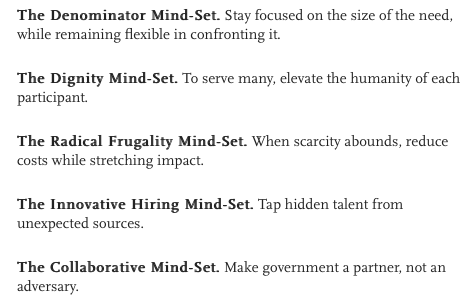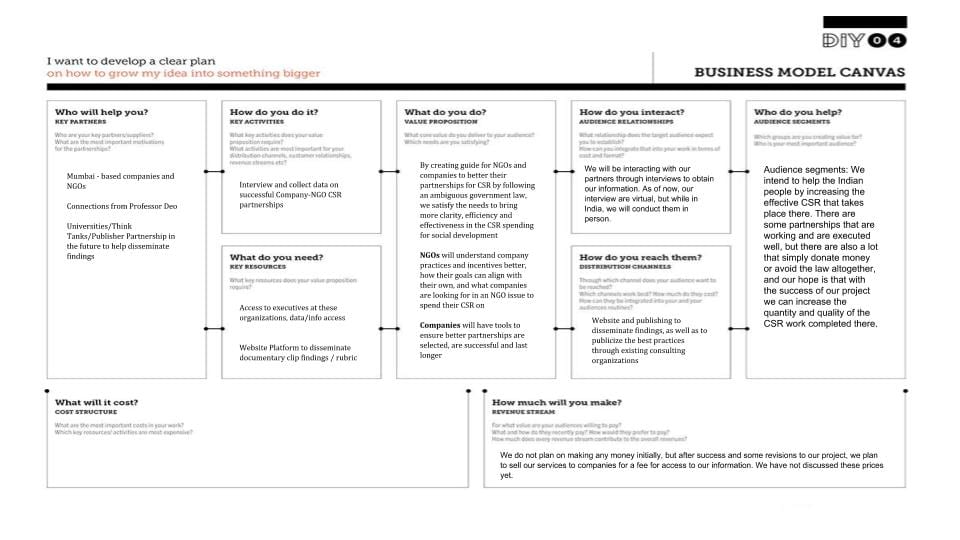List five take-aways from Guy Kawasaki’s talk and explain exactly how you will integrate that concept/construct/strategy into your project. Make it compelling. Don’t write generic forgettable text.
- Making a mantra for the employee is the reason for why they are there, and is so vital for accomplishing any goal of a business. In our project, our mantra goes along the lines of “Making an impactful, social change through CSR collaboration”. We are not adding to the existing system, but rather seeking out to improve the conditions that companies and organizations must work under in this new law.
- Get going: by being different and thinking different, you can do things 10x better than the existing practices. By studying the existing literature for CSR practices and guidelines in India, we can learn what already has been said about these partnerships and what our team has to offer that is a unique and valuable perspective.
- Creating a unique product to the consumer that also adds value to the consumer – like Fandango, a simple to use and valuable product goes a long way when it delivers a need the consumer did not even know it wanted fulfilled. In the same way, companies and NGOs organized under the CSR law may not know they needed ways to improve their practices, nor the long term benefits for doing so. We want to show how improving social welfare now and consistently in the future will lead to not only improved quality of the surrounding community, but also a stronger reputation for the company as well as sustainable credibility for NGOs carrying out such initiatives.
- Hire infected people – When adding more people to your endeavor, aim higher and bring in people that will add true value to the project. In our project, we hope as we expand the scope of our goals in the future, we will need additional partners to help disseminate our findings as well as to grow our research farther out past Mumbai. When adding more partners, we need to ensure they share the same values and have the capability to push our research and impact to the next level.
- Weaving a MAT – In defining your Milestone, Assumptions and Tasks, you can create a clear plan for what your expectations and priorities are, and to communicate these with partners and stakeholders. Our milestones include:
- Identify interesting, compelling case studies of existing partnerships with companies and NGOs, and have them be interested in working with us
- Begin working on preliminary documentary clips that explain who we are, what is the law, and problems the law is supposed to address.
- In fieldwork, ask questions and research what works for a successful partnership and how these factors have been developed.
- Produce a policy document and documentary clips that lays out our findings that are a guide for companies and NGOs to better their relationships.
In the article, “Why Indian Nonprofits Are Experts at Scaling Up”, many of the practices for how nonprofits are successful in India for overcoming both scale and scarcity happen to also parallel the main messages that Guy Kawasaki mentioned. Here are the mindsets nonprofits employ, and since our project looks at the interaction between companies and nonprofits, I think many of the key takeaways from Kawasaki’s talk can apply across organizations.
In partnership with one or at most two team members, present a business model canvas for your venture.
In collaboration with Nikki Groce and Olivia Abrams


Leave a comment